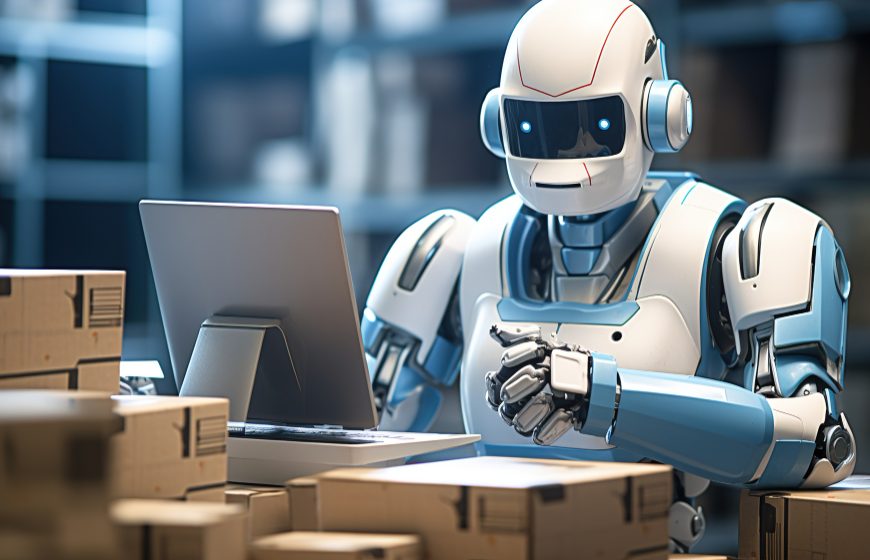Understanding the Expanding Scope of Process Automation and the Realistic Boundaries of What Robots Can Currently Handle in the Workplace
The conversation around process automation has matured significantly over the past decade. Once dismissed as a futuristic concept, automation technologies—ranging from robotic process automation (RPA) to machine learning–based decision aids—are now standard tools across industries. The expansion of automation’s scope reveals not just its growing potential but also the pragmatic boundaries that businesses must respect to avoid overstretching its capabilities.
At its core, process automation thrives when the task is rule-based, repetitive, and structured. Think of data entry, invoice processing, or scheduling—classic examples where strict rules govern execution and consistency is paramount. Robots, whether physical machines or software “bots,” excel in environments where human error is common yet preventable and where huge volumes of transactions or records must be handled without lapses in speed or accuracy.
By contrast, automation encounters challenges when nuance, empathy, or complex ethical judgment is required. Customer service interactions that rely on emotional intelligence, medical procedures that involve interpreting subtle patient cues, or strategic decision-making driven by creative problem-solving still demand human oversight. The line is clear: tasks that are standardized and governed by explicit rules are more mature for robotic delegation, while those involving ambiguity, contextual interpretation, or moral responsibility remain firmly in human hands.
The realistic approach for most organizations involves blending automation with human guidance. Efficiency gains can be massive, but quality and trust must not be compromised. Balancing these priorities—using robots where they are strong and people where nuance matters—defines the present moment in business automation strategy.
Practical Examples of Delegated Workflows Where Robots Already Outperform Manual Labor
The early success stories of automation are not theoretical—they are happening every day across industries. Below are some of the most prominent areas where robots, both digital and mechanical, are already shouldering the bulk of repetitive activities with measurable improvements in efficiency.
1. Repetitive Data Entry
Data entry has long been a laborious task prone to distractions, fatigue, and mistakes when handled manually. Robotic Process Automation (RPA) tools now handle massive amounts of structured data inputs—such as transferring information from forms into databases—at speeds unattainable by humans. These bots work tirelessly, 24/7, with near-zero error rates, freeing employees for higher-value analysis and problem-solving tasks.
2. Automated Invoice Processing
Finance departments have embraced automation in accounts payable and receivable through bots capable of reading, validating, and recording invoices. Paired with intelligent character recognition, these systems process invoices in minutes rather than days, matching them against purchase orders and flagging discrepancies automatically. This not only reduces costs but also protects companies from compliance risks and late-payment penalties.
3. Predictive Maintenance in Manufacturing
Physical robots and IoT sensors on manufacturing floors generate continuous streams of data about equipment performance. Algorithms analyze vibration patterns, temperature fluctuations, and output consistency to predict failures before they occur. Instead of following rigid maintenance schedules, companies now rely on predictive triggers, reducing downtime, improving asset longevity, and minimizing waste. This represents a shift from reactive labor to proactive intelligence—delivered by machines.
4. Intelligent Scheduling Systems
Workforce scheduling and resource allocation have traditionally consumed managers’ time, often leading to inefficiencies. AI-powered scheduling tools now optimize shifts, match staffing levels to demand surges, and even consider labor law requirements automatically. For industries like healthcare or logistics, where abrupt changes are common, these intelligent schedulers outperform manual coordination every time.
5. Robotic Process Automation in Financial Services
The financial sector has become a proving ground for process automation. RPA bots routinely handle customer onboarding, KYC (Know Your Customer) checks, fraud detection, and compliance reporting. Given the sheer volume of regulatory requirements, these bots help ensure accuracy while allowing compliance officers to focus on risk analysis rather than clerical verification.
6. Streamlined Logistics Operations
From warehouse sorting via robotic arms to AI-driven route optimization for delivery fleets, logistics has been transformed by automation. Robots in warehouses pick and place goods faster than humans, while sophisticated algorithms calculate delivery routes that minimize fuel consumption and delays. These developments not only save costs but also contribute to achieving sustainability targets by reducing wasted movements and resources.
The future of process automation is no longer a distant vision—it is a present-day reality reshaping businesses worldwide. Robots, in both software and hardware forms, consistently outperform manual labor in structured, repetitive, and high-volume workflows. Such tasks include data entry, invoice management, predictive maintenance, scheduling, financial verification, and logistics coordination. Their ability to operate at scale without fatigue ensures accuracy and frees humans to focus on creativity, innovation, and more complex decision-making.
However, businesses must remain clear-eyed: automation is not a wholesale replacement for human skill. Emotional nuance, ethical discernment, and adaptive thinking are still domains where human input is indispensable. The most successful organizations are those that integrate robotic efficiency with human judgment, striking the right balance between reliability, compliance, and strategic oversight.
As process automation continues expanding, the distinction between what can and cannot be effectively delegated will remain essential—not only to safeguard quality but also to create workplaces where both human and robotic capabilities operate in harmony.










